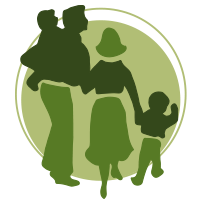Unravelling tension that can build up in our bodies.
Many patients who visit a chiropractor may reflect on what happens when we start to work on their soft tissues as the pain may change during the course of their treatment. A frequent comment on the second treatment would be: “How come I can feel it in a different place now?” Our job is then to explain how the healing process may be working for this person at this time.
Often patients come to us after years of pain, inflammation or joint stiffness. They have literally tried everything. They are frustrated and fed up and looking for an answer. The soft tissue injury that they suffer from has usually gone through its initial acute stage, and is now well and truly in a chronic phase. Often they will have forgotten how it felt in the beginning as most of us live in the “now” and forget what kind of pain we have experienced in the past. This is the body’s subconscious way to forget old injuries.
How fear makes us move less
When we are in pain, we will hold our bodies differently and in a protective manner. We are subconsciously trying to avoid hurting it again, and therefore tense up in anticipation of more pain. This can often create new protective tension and restricted movements of our bodies. Many patients we see have long term chronic postural behaviours as a result of pain avoidance.
A classic example of this is when we have back and leg pain. What most people will do is to tense up the leg muscles each time we weight-bear on that leg in preparation for the pain. We are all fearful of our bodies hurting more. In doing so we unfortunately create more muscle tension which then will add to the already existing chronic muscle and joint condition. The therapist’s role will again be to show how this works and teach you techniques to relax the leg into the movement instead of tensing it.
Like an old transistor radio
The way we explain this is by looking at how an old transistor radio works. When you try to tune in to a channel it initially sounds blurry and noisy. It is a generalised noise and horrible to listen to. When you finally find the right channel it becomes clearer, sharper and more focused.
When we start working on an area that has been troubling you for a long time, like the shoulder joint for example, it will initially be sore all over. Often you cannot even pin point the pain, as it is so generalised. As the compensatory inflammation recedes, you will often find that the area appears more defined and sharper, and worry that you are getting worse. However, as the surrounding pain is getting better you are just becoming more aware of the original injury.
Peeling the layers of an onion effect
When chiropractors start to work with muscles, fascia, ligaments, tendons and joints we often unravel old injuries. We may therefore in a way, shed another layer of protective spasm or tension on each visit. Which is like “peeling the layers of the onion” in order to get to the root cause. Each time we are able to shed another layer of tension, the pain pattern may change in relationship from the initial injury. The practitioner’s goal is to improve joint and soft tissue tension and thereby help the body to relax and recover into a better alignment and tension.
But as we are human beings we do not naturally reflect on how our bodies will recover as we are not taught to listen to the signals the body gives us. It is only after the chiropractor sits down and reminds you of all the areas and the degree of pain you initially presented with, that you might fit the pieces together. At Luck’s Yard we believe that patient education is “key” in the care process. Make sure you ask your chiropractor or manual therapist to explain to you where you are in the healing process so that you can follow this journey and understand it better.
[mailchimpsf_form]



